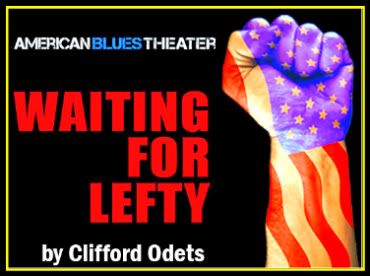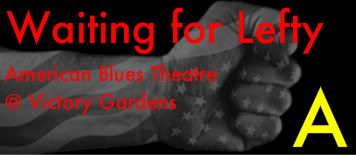I liked their graphic design choices. Their posters have vivid colors, excellent artistic execution, and a clear presentation of a forthcoming production. However, the poster didn’t authentically reflect the artistic choices of this specific production. The bright red, white, & blue invoke imagery of a patriotic nature. However, this play relayed a historical period where many bright, fresh Americans felt very removed from this country’s commitment to life, liberty, & pursuit of happiness. I would prefer the production I saw to the production that the postcard promised; it is more purposeful & much more relevant, especially in these economically impossible times. I wish they had chosen to advertise what this excellent production turned out to be Cradle Will Rock meets It’s All True. I loved both of those and I loved this.
I love theatre but am unfortunately wired with a very short attention span. This play was quick, even for me. A 60-minute play does not equal a full-length production; this is what we call a one-act. Luckily, I bought a half-off ticket for $12.50 at HotTix. If I’d spent twice as much, I’d have felt ripped off, even though the quality of the production was excellent. Charging $25 a ticket equals $2.40 a minute; that rate is applicable to a massage but not a theatre ticket. The quality of this production is not in question, but the ticket price needs to be adjusted considering the fact that this was a one-act.
Stand-Out Performances
Cheryl Graeff as Dr. Benjamin
Dr. Benjamin was dedicated physician who was the first on her hospital staff to be fired (based primarily on the her Jewish heritage). This vignette opened with her expressing a validated frustration to her supervisor at the different treatments patients received due to their economic class. It closed with her establishing herself as an angry victim who has serious plans to fight back. Her piece was the last one that was primarily character-driven & it was such an effective playwriting decision. In a play that focuses primarily on the effects of a depression upon the specific cab-driving group, it is important to acknowledge & remember that the economic effects of this period managed to destroy both white-collared and blue-collared families. In her role, Cheryl Graeff created a character with a strong spectrum of ideas, experience, and history. I felt her authentic commitment to her work as a doctor. She only had a few lines about her parents, but those lines were so articulate in their artistic interpretation that I felt a quick connection to this character’s widespread history. She was dynamic in creating a flow in the text, an excellent reactionary in relating to her supervisor (played by John Mohrlein) & entirely engaging.
Gwendolyn Whiteside as Florrie
Florrie was a young woman torn between her family’s dependence on her minimal secretary salary and her earnest desire to continue investing her love & energy in 3-year engagement to Sid (played perfectly by Zachary Keeney). This engagement would realistically never result in a marriage due to the economic impossibilities they would inevitably face in starting a new life together. At the pressure-some prompting of her brother Irving (played by Bradford R. Lund) and the tragic acknowledgment of their situation’s reality by her beloved, Florrie & Sid together make the necessary & impossible decision. This vignette effectively communicated the true tragedies that befell these Americans because it showed the true consequences of this horrible era: the loss of the ability to pursue one’s happiness & love. Florrie held on so hard the to the hope of her love-filled marriage becoming a reality because that is the most basic American & human right. Gwendolyn Whiteside made this character empathetic, earnest, and overall endearing. She crafted a character the audience would have loved to see in a wedding dress, and so she simultaneously created an empathetic audience who mourned along with her at the loss of that dream. 


No comments:
Post a Comment